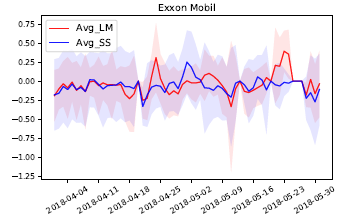
Jebb Peria ’10 recently answered some questions about careers in private equity in a post for his employer, EV Private Equity. Here are a few excerpts from the interview.
I’ve heard of private equity but how does it differ from, say, venture capital or fund management?
Fund management is basically a firm of money managers investing pooled funds from investors. The capital may be invested in traditional asset classes such as equities, fixed income and cash and alternative asset classes such as hedge funds, private equity, real estate, commodities and infrastructure.
Private Equity (PE) is an active form of investment in privately held companies with the objective of growing them over a medium to long-term period. As active investors, PE firms work closely with management to increase and maximise the company’s value through financial engineering, improved governance and operational performance.
At EV Private Equity, we primarily invest in early-growth companies that have: a distinct product or service; the potential to grow rapidly; low levels of debt; and experienced management teams. We seek innovative and disruptive technology companies that can scale and drive superior returns.
Venture Capital (VC) is a subset of PE which provides capital to early-stage businesses, usually in technology-based sectors. Venture capitalists normally invest in high-growth, high-risk, start-up or early-staged ventures, typically with a bias towards technology or innovation. PE tends to focus on later-stage investment in businesses that are more established and are generating cash. VC uses primarily equity while PE may use equity and debt (leverage).
Both PE and VC use a measurement known as MOIC (Multiple On Invested Capital) to calculate the returns they make from their investments. PE target returns range from 2x-5x while VC returns are expected to be higher.
Do I need an MBA from Harvard, a mathematics degree or an accountancy qualification in order to be considered?
No, not necessarily. As a matter of fact, I don’t have any of those credentials. I graduated with a BA in Economics (with highest distinction) from York University in Canada, an MA in Economics from the University of Toronto, and an MSc in Finance from Barcelona GSE. I am also a CFA® charterholder. I guess this depends on which type of PE firm you want to work with as there are generalists and specialists.
As energy specialists, our team at EV Private Equity is comprised of people with substantial experience in the energy industry [oil and gas (O&G), oil field services (OFS)] as well as those from technical disciplines (reservoir, drilling, mechanical, chemical, and software engineering as well as geophysics and naval architecture). We also recruit candidates with graduate business degrees in areas such as MBA, finance, economics, strategy etc.
Is it true that private equity is very secretive and is not accountable to any regulators or governments?
False.
EV Private Equity is regulated by the Financial Conduct Authority in the UK and the SEC in the US under the Investment Advisor Act of 1940.
Like any other firm, EV Private Equity and its portfolio companies are obliged to abide by the laws and regulations of all countries we operate in. This is also part of the fiduciary duty towards the firm’s institutional investors, comprised mainly of large public and private pension funds, insurance companies, university endowment funds and sovereign wealth funds.
What is a typical day like in private equity?
I typically start the morning reading through the latest news and market trends. I skim-through DagensNæringsliv, Bloomberg, Financial Times and even LinkedIn to check on the latest oil price, mergers and acquisitions (M&As) and geopolitical news. Then, I read through my emails to check for any updates on the portfolio companies I’m involved with and any immediate requests from the partners.
My day is normally split between fixed deliveries and ad hoc tasks. My deliveries would range from weekly meetings and operational updates with portfolio companies to monthly, quarterly and yearly financial reporting to updating fair market values of portfolio companies to weekly meetings with the digital marketing team. I would also participate in quarterly investor meetings, board meetings as well as annual strategy meetings with my portfolio companies.
If there’s a deal I am involved in, I would build the financial model, perform valuation and sensitivity analysis and support the drafting of the investment paper. I would also be participating in weekly call updates with the due diligence providers regarding any red flags and show stoppers (in other words, developments that may affect our decision to invest).
If one of my portfolio companies is preparing for an exit, I might be having calls with the management and the financial advisors discussing the potential buyers, the market sentiment and the status of the Information Memorandum (IM), the document we share with prospective buyers.
There is not much slack time. If I do have some spare time, I can always find something to work on: a process to simplify and make more efficient; a model to automate; improvements to our social media presence; or offering support to other office locations.
What are the rewards?
Helping to create value for the company and produce superior returns for investors is rewarding and gratifying.
I also get to work with different partners, management teams, board members and technologies. These teach me different insights, strategies, and management styles.
It is very rewarding to work with the smart, entrepreneurial and down-to-earth group of individuals at EV Private Equity. They make the workplace fun and invigorating.
Of course, the job is also financially rewarding. I would like to believe that I am fairly and reasonably remunerated given my performance and contributions, the skillset I bring to the table, and my dedication to my craft.
Intrigued? Read the full interview with Jebb on EV Private Equity’s website!

Jebb Peria ’10 is an Associate at EV Private Equity in Norway. He is an alum of the Barcelona GSE Master’s in Finance.



